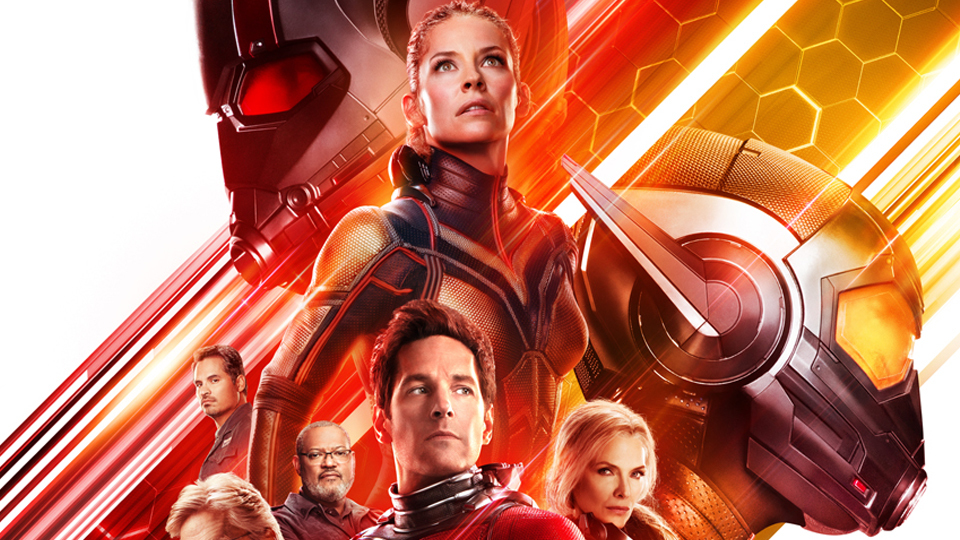Even considering its many successes over the past couple of years, the 10-year anniversary of Marvel Studios in 2018 has, amazingly, perhaps been the outfit’s best year to date! Both Black Panther and Avengers: Infinity War were widely considered to be masterpieces by many moviegoers, and ultimately ended up becoming strong billion-plus grossers that cemented the Marvel Cinematic Universe’s status as going stronger than ever, even at the ten-year mark! As fantastic as Black Panther and Avengers: Infinity War were however, they also created a very difficult position for Ant-Man and the Wasp, 2018’s third and final Marvel Studios offering, which has to follow two of the MCU’s best movies yet, while also serving as a previously unplanned sequel to the Marvel Studios movie that audiences initially had the least faith in back in 2015, before it ended up becoming a considerable surprise hit at the global box office.
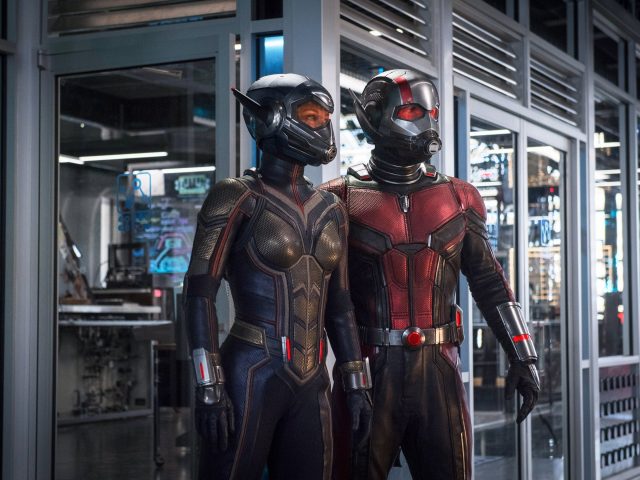
Like its titular underdog heroes however, Ant-Man and the Wasp proves that, just because it’s smaller in scope than Marvel Studios’ previous two 2018 offerings, doesn’t mean it can’t deliver. Despite Black Panther and Avengers: Infinity War being immensely tough acts to follow (and 20th Century Fox’s Deadpool 2 for that matter, if we’re counting 2018’s third-party Marvel movies not made by Marvel Studios), Ant-Man and the Wasp manages to hold its own as an entertaining and surprisingly sharp Marvel Studios sequel. It doesn’t have anywhere near the depth that Black Panther or Avengers: Infinity War ultimately had, playing it much safer with its fluffier, less serious storytelling, but Ant-Man and the Wasp still manages to be a clear-cut improvement over its more uneven predecessor. It’s a little more silly and disposable than your average Marvel Studios movie, much like the original Ant-Man movie was three years ago, but after the world-shattering events of Avengers: Infinity War especially, maybe some goofy, simple-minded escapism is just the pick-me-up that the Marvel Cinematic Universe could use right now.
Ant-Man and the Wasp picks up with Paul Rudd’s lovable ex-con, Scott Lang just under two years after the events of 2016’s Captain America: Civil War, and a short while before Thanos makes it to Earth for the events of Avengers: Infinity War. Scott has made an off-screen deal with the U.S. government to leave his imprisonment on The Raft in favour of two years’ house arrest (this partially explains why Ant-Man wasn’t present for the events of Avengers: Infinity War), overseen by Randall Park’s comic relief FBI agent, Jimmy Woo (Woo is a S.H.I.E.L.D. agent in the Marvel Comics universe, but not in the MCU, where S.H.I.E.L.D. collapsed years ago), with the main stipulation of the deal being that Scott can’t have any contact with Michael Douglas’ Hank Pym or Evangeline Lilly’s Hope Van Dyne. Obviously, that doesn’t last, since Hope and Hank soon need Scott’s help, when it becomes apparent that Scott has a link to the Quantum Realm, which was established during his climactic battle with Darren Cross/Yellowjacket in the original Ant-Man movie.
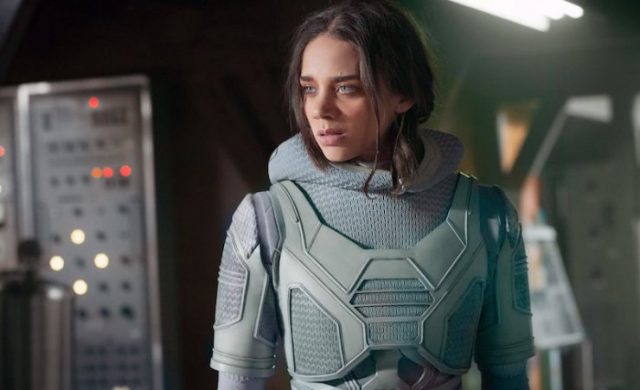
Rudd continues to be one of the biggest highlights in Ant-Man and the Wasp, where his lovable charm lends to a more comical superhero that’s even less grounded in reality than most of the others, even by the standards of the MCU. Douglas and Lilly also continue to nicely tie the heroic ensemble together however, particularly since Lilly now has something truly worthwhile to do in this sequel, finally being able to suit up and kick ass as the titular Wasp, succeeding her lost mother’s mantle. I say, “Lost” and not, “Late”, since Janet Van Dyne is very much alive in the Quantum Realm, which is definitively confirmed after a twist relating to Scott’s brief stint there during the first Ant-Man movie. Thus, most of the character arcs for the heroes in Ant-Man and the Wasp relate to trying to find a reliable way into the Quantum Realm to rescue the lost Janet Van Dyne, who is played here by Michelle Pfeiffer, while evading both the authorities and the dedicated villains.
The other key objective of Ant-Man and the Wasp, beyond bringing the first-generation Wasp back to the land of the living (so to speak), is establishing the all-new current Wasp of the MCU, Hope Van Dyne, who is the first female Marvel Studios superhero to have equal billing in a movie’s title, and share a lead role. Now that she’s no longer stuck trying to work with a by-the-book businesswoman template, Evangeline Lilly gets to stretch and enjoy herself a lot more in Ant-Man and the Wasp, and this makes Hope a far more enjoyable and likable character this time around. Hope’s transformation into the Wasp really doesn’t disappoint either, even with her proper training and technology preparation taking place off-screen, thus allowing her to immediately jump into the action sequences when the time comes. The addition of wings and blasters on her suit not only provides a thrilling new dimension to the action with Wasp, but also provides some amusing comedy with the established Ant-Man as well, since Ant-Man is predictably left to look inferior and under-equipped, beyond the fact that, unlike Wasp, he can actually increase in size, and not just decrease. That said however, there is something of a retcon to Ant-Man’s size-increasing powers presented in this sequel, to explain why he doesn’t just always go big and quite literally crush his enemies.
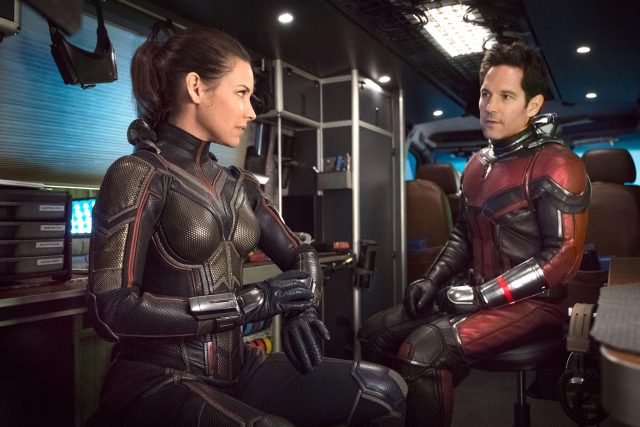
In terms of villains, Ant-Man and the Wasp sports two central antagonists, though one is a bit better than the other. Walton Goggins portrays one of the baddies, Sonny Burch, a re-worked version of a former Cross Technological Enterprises criminal in Marvel Comics lore (and yet despite this, Burch is an enemy of Iron Man in the Marvel Comics universe, not Ant-Man), now re-envisioned as a black market dealer that Hope tries to bargain with in order to rescue her mother, only to get the heroes in Burch’s crosshairs. Goggins does what he can to give Burch some quirky character, but it’s pretty evident that he’s playing a fairly shallow, one-note bad guy. Burch could have been dropped from the movie entirely, and not much of value would be lost. Burch in fact only seems to be present to make sure that Scott’s buddy, Luis, once again played by Michael Pena, along with his stooges from the first movie’s heist, have something to do, since Burch’s agenda is more or less a way for Luis’s new security company to be necessary in the quest to rescue Janet. At least Burch’s boilerplate goons do lend more bodies to knock around for the handful of awesome action scenes in Ant-Man and the Wasp though.
The superior of the two villains is the one that has predictably taken up most of Ant-Man and the Wasp’s marketing, that being Ghost, who is, ironically, another enemy of Iron Man, not Ant-Man, in Marvel Comics lore. Ghost has been extensively tweaked in Ant-Man and the Wasp, right down to her very gender, since Ghost is a man in other Marvel media, including Marvel Comics’ universe, but has been changed into a woman for Ant-Man and the Wasp, complete with an all-new identity that ties her into another dedicated enemy of Hank Pym from Marvel Comics, in a small, but cool Easter egg. Hannah John-Kamen portrays the new female Ghost in Ant-Man and the Wasp, a Quantum Realm-distorted thug who can phase through solid matter, and is a ruthlessly capable hand-to-hand combatant with a past steeped in government black ops to boot. Ghost not only lends herself to some exceptionally cool action scenes, with the character’s powers being used in all sorts of clever, fast-paced choreography, but also provides another inspired obstacle in the race to the Quantum Realm, since she needs to appropriate Hank Pym’s Quantum Realm technology to try and fix her out-of-control tangibility, in turn putting Janet at risk. Does this sympathetic twist mean that Marvel Studios managed to stick the landing in a year with not one, but three surprisingly great villains between their two previous 2018 movies? Well, sort of. The ho-hum Sonny Burch hurts the final score, but even if she’s no Killmonger, Klaw or Thanos, Ghost is nonetheless another better Marvel Studios antagonist for sure!
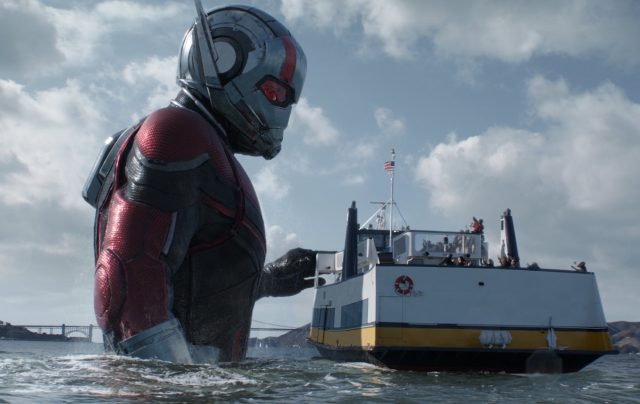
As cool as Ghost is, and as fun as the heroic ensemble is in Ant-Man and the Wasp however, it’s some of the smaller supporting characters that end up stealing the movie at certain points! Even if the movie has to force an excuse to bring back Scott’s old heist crew, Michael Pena nonetheless remains a big comical standout as Luis, who provides a perfect balance between amusing callbacks to the first movie, and all-new spins on his humour for the sequel. Abby Ryder Fortson is another big highlight as the still-adorable, and increasingly courageous Cassie Lang, Scott’s daughter, who aspires to be just like him, Ant-Man mantle and all, no doubt foreshadowing Cassie’s eventual superhero tenure as heroine, Stature from Marvel Comics lore. Now that the serious family struggles with Scott and his ex-wife, Maggie from the first movie are out of the way as well, Judy Greer and Bobby Cannavale are allowed to actually be funny and get into the standout jokes in Ant-Man and the Wasp too. Both Maggie and her new husband, Jim are better characters in the sequel for sure, since they’re just flat out funnier and better utilized, especially when Greer is effectively channeling her air-headed crazy person schtick made famous from her longtime stint as Cheryl Tunt on Archer. Like last year’s Spider-Man: Homecoming, Ant-Man and the Wasp leans into its smaller scale to go bigger with the humour, even with these smaller parts, and this helps the movie’s returning personalities to keep growing on audiences, even when they’re completely removed from big spectacles like the Thanos invasion.
Finally, Laurence Fishburne’s Bill Foster, a former colleague of Hank’s (and a size-increasing superhero called Goliath in Marvel Comics lore), also ties in with trying to put together a morally ambiguous means to reach the Quantum Realm (any further details constitute some significant spoilers), which the heroes, Burch and Ghost are all trying to do first, creating something of an interesting scenario wherein the heroes and Ghost at least are somewhat interpretive in terms of who is right, even if Burch gets lost in the shuffle as a more forgettable and obvious villain. Ant-Man and the Wasp taps upon a really interesting conflict here, namely in the question of trading one life for another, since fixing Ghost would mean that Janet becomes permanently lost, and saving Janet means that Ghost will be painfully phased out of solid existence, due to her own strict time limit. There’s a chance to really play with who is the real hero and who is the real villain in this story, and frustratingly, Ant-Man and the Wasp does end up somewhat wimping out of this debate, in favour of some easy fixes in the movie proper (the duo of post-credits scenes however are predictably another matter!), but I suppose that’s to be expected. The Ant-Man movie franchise clearly doesn’t want to become too serious or complex with its conflicts, and I suppose that’s fine, since these movies work well as sugary blockbuster silliness. That’s all the more true after the emotional haymaker that Avengers: Infinity War previously hit audiences with in its aftermath as well!
Ant-Man and the Wasp wasn’t originally part of the MCU’s story template, and it shows, since this is a more self-contained story that doesn’t have any significant bearing on the wider live-action Marvel Universe at this point. As a follow-up to the previous Ant-Man movie from 2015 however, Ant-Man and the Wasp does nonetheless function as a superior sequel for the most part, offering more thrills, laughs and consistent entertainment value than its predecessor. This may not be surprising to some, since Marvel Studios is now finally able to build Ant-Man and the Wasp from the ground up as their own movie, rather than having to work with the discarded initial story pitch from Edgar Wright and Joe Cornish, who were previously meant to mastermind the aborted Ant-Man movie that Universal was trying to develop, before Marvel Studios attempted to hire them for an MCU take on that same concept, only to lose Wright and Cornish to creative differences. With Ant-Man and the Wasp no longer hobbled by being caught between two directors’ visions, its story is allowed to breathe a lot more, and that in turn makes this sequel’s plot noticeably more fun.
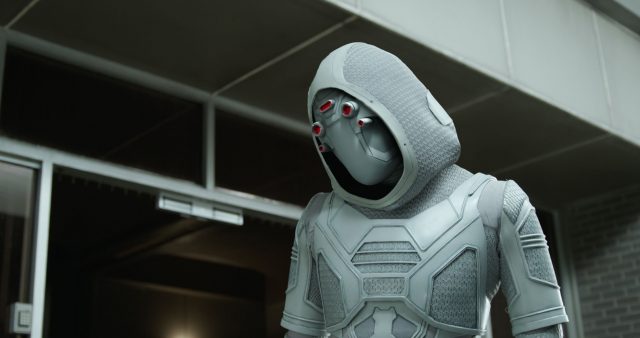
As I said, the plot of Ant-Man and the Wasp is nonetheless far simpler than those of the past several MCU movies, even going into the past couple of years. Its story more or less amounts to a light-hearted race for Hank Pym’s conveniently portable laboratory, which carries a path to the Quantum Realm, a place of many untapped possibilities. A conduit to the Quantum Realm is probably the closest that Ant-Man and the Wasp comes to potentially having any wider effect on the MCU at large, but this sequel does work best as a more self-contained story, like its 2015 predecessor did, especially if you’re a Marvel fan that was left reeling from the events of Avengers: Infinity War a couple of months ago. The heist elements of the first movie are ditched in favour of something between a criminal caper and a comical pursuit thriller in this follow-up, but this might be another thing that some Marvel fans may be relieved at, since it’s another way that Ant-Man and the Wasp firmly separates itself from its predecessor. There’s not much to dive into with the story here, especially if one wants to avoid discussion of spoilers, but as a dessert to the heavier Marvel Studios movies that preceded it this year, Ant-Man and the Wasp manages to be a lot of fun, even with significantly less depth.
(NOTE: The spoiler section, when clicked, discusses post-credits scenes, Easter eggs and some small connections to the wider Marvel Cinematic Universe. Bear in mind that this optional section also contains a major spoiler from Avengers: Infinity War, so click and read at your own risk if you haven’t yet seen that movie!)
One of the only exceptions to this is several mentions of Ant-Man’s involvement with Captain America’s resistance faction during the events of Captain America: Civil War, which is what leads to Hope and Hank bearing quite a bit of resentment towards Scott, and only begrudgingly asking for his help with accessing the Quantum Realm to rescue Janet. Hope also addresses that her Wasp training did occur when Scott was still in possession of the Ant-Man suit and still in contact with her, since she expresses irritation that Scott never invited her along to join Cap during the events of Captain America: Civil War. It’s also confirmed that Hope and Hank had to go on the run and lose their company, fortune and estate because their size-changing technology and Ant-Man/Wasp suits are in violation of the Sokovia Accords, the superhero-regulating legislation that was first established in Captain America: Civil War, though Hope’s and Hank’s forsaking of their former life with Pym Technologies occurs completely off-screen.
Lastly, while Ant-Man and the Wasp’s proper events completely precede the events of Avengers: Infinity War by at least a few weeks, unfolding over a period of about three days (as confirmed by Jimmy Woo, clarifying what’s left on Scott’s house arrest deal), there is one major tie-in to Avengers: Infinity War’s events established between the two post-credits scenes. Rather than set up for more potential Ant-Man sequels, or lay the groundwork for other Marvel Studios projects separate from the fallout of Avengers: Infinity War, Ant-Man and the Wasp does offer one big tease for next year’s still-officially-untitled fourth Avengers movie in both scenes:
The first mid-credits scene unfolds with Scott, Hank, Hope and Janet devising a means to voluntarily move in and out of the Quantum Realm to keep stabilizing Ghost, who survives and is essentially ‘cured’ at the conclusion of the movie, though also goes on the run with her undercover ally and adoptive father, Bill Foster, since she can’t face what she’s done after being exploited by S.H.I.E.L.D. (probably HYDRA, in reality). Scott prepares to gather ‘Quantum Energy’ for Ghost in the Ant-Man suit during this mid-credits scene, but while he’s still in the Quantum Realm, Hope, Hank and Janet are all vaporized by Thanos’ fateful snap, which occurs at the end of Avengers: Infinity War, wiping out half of all life in the universe. With all three of his supervising allies slain by Thanos, Scott is thus left stranded in the Quantum Realm, which is where he’ll presumably still be when next year’s fourth Avengers movie unfolds. There is one other scene completely after the credits, but it simply shows Scott’s empty house, with a TV declaring a state of emergency in the wake of Thanos’ snap, while the decoy ant that Hope and Hank had rigged to fool the FBI after ‘stealing’ Scott for Janet’s rescue, continues to fake Scott’s routine, seemingly indicating that no one is aware of Scott being lost in the Quantum Realm at this point, including the authorities.
As one last small Easter egg as well, the new female Ghost’s identity is a crucial bit of information for Marvel fans, since her name is Ava Starr, the daughter of Elihas Starr. As longtime Marvel Comics readers and fans of Hank Pym’s Ant-Man would know, Elihas Starr was the original arch-nemesis of Hank Pym’s Ant-Man from Marvel Comics lore, better known by his villain mantle of ‘Egghead’. Elihas Starr and his wife are seemingly killed in the accident that causes Ghost’s out-of-control phasing powers in the case of Ant-Man and the Wasp, but given the tricky nature of the Quantum Realm, it’s entirely possible that Elihas Starr may later return as Egghead in a potential third Ant-Man movie, possibly as another Quantum Realm-enhanced threat.
Peyton Reed once again returns to direct Ant-Man and the Wasp, after originally taking over for Edgar Wright in directing the first Ant-Man movie a few years ago. Again, now that Reed is no longer beholden to another director’s vision to any extent, he’s allowed to really experiment and keep pushing his own quirky filmmaking style in this sequel. This leads to humour that feels even more natural, action that feels even more exciting, and an especially potent sense of heart that complements the smaller scope of the story very well. It’s this greater sense of consistency with the direction that most often helps Ant-Man and the Wasp stand tall as a superior follow-up to its slightly compromised predecessor.
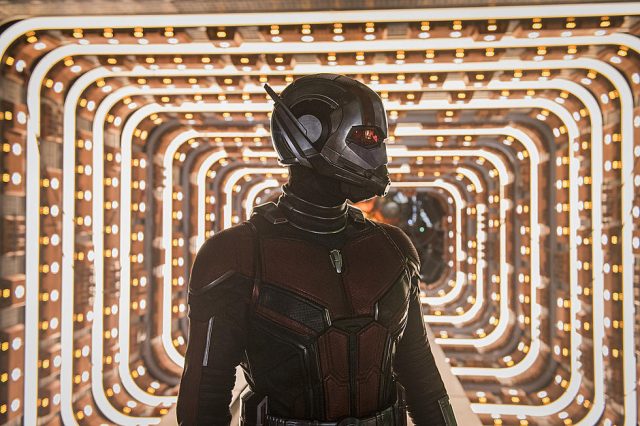
Reed didn’t feel completely hobbled in directing the original Ant-Man movie, mind you, but now that he’s able to work with a fully MCU-approved story treatment, he’s able to do away with story elements that he clearly didn’t see as a priority in the previous movie. Most notably, there’s a lot less emphasis on the hazards of a giant-sized world in this sequel, which was clearly a big focus from Wright’s original pitch, one that still permeated much of the original Ant-Man’s final product in the end. Instead, Reed focuses more on playing with the titular size-changing heroes to create more fast-paced and zany action, at a mostly normal scale. This also fits better with the direction of a follow-up movie to boot, since both Ant-Man and Wasp are now more seasoned and empowered heroes, and this in turn lets them exploit their size-changing capabilities for more tricky and amusing combat methods.
Now that Reed is freed from having to lean so hard into the shrinking hook for the danger, he’s also clearly relishing the opportunity to get extra weird and unpredictable with elements like Ghost and the Quantum Realm, and that pays off quite a bit as well. The choreography and direction with Ghost’s combat scenes, especially in the climax that unfolds across the entirety of San Francisco’s streets, is exceptionally impressive, even giving the equally standout action of Black Panther a run for its money at times, albeit from a much more comical angle in this case. There’s a bit of cartoon charm to both the action and the humour throughout Ant-Man and the Wasp, but Reed’s direction unfolding like a live-action cartoon from both angles fits very well with the title characters, leading to a sequel that feels noticeably more enthusiastic than its predecessor.
Christophe Beck once again composes the soundtrack of Ant-Man and the Wasp, after composing the music for the first movie. In keeping with the presentation of the movie overall, the score is more carefree than the past couple of Marvel Studios movies, being chock full of jazzy, light-hearted compositions. Interestingly, it calls back to the soundtrack stylings of Incredibles 2 from just a few weeks ago, though with a bit less class and a bit more zaniness in this case. It’s a solid score that fits the movie well, nicely lending to the cartoon-flavoured hijinx that occur in the action scenes especially. Again, following the epic, amazing soundtracks of Black Panther and Avengers: Infinity War is no easy task, but the music suite of Ant-Man and the Wasp gets the job done, namely by not taking itself any more seriously than the movie in general.
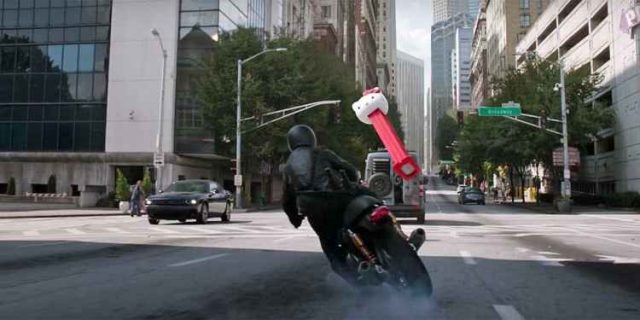
The rest of the sound design is a bit less intense than most Marvel Studios movies, which continues to fit well with the more light-hearted style of Ant-Man and the Wasp. There’s still a few hard-hitting moments of destruction and mayhem, but it’s all done in good fun, which suits these movies being arguably the least lethal out of Marvel Studios’ current movie franchises. Even in IMAX theatres, Ant-Man and the Wasp feels positively fluffy in its sound mixing compared to Avengers: Infinity War in particular, but the sound design is nonetheless well-implemented, and often well-executed in terms of mining laughs as well, even when the characters are full-on duking it out!
The original Ant-Man contained lots of impressive special effects, especially during the size-changing sequences, but Ant-Man and the Wasp still finds plenty of ways to visually impress, despite kicking most of the shrinking set pieces to the curb at this point. Even when unfolding on a smaller scale, there’s lots of outstanding visual work throughout Ant-Man and the Wasp, especially with Ghost, who is beautifully realized with a phasing filter effect that shows apparition-like alternate movements and facial expressions around her body as she moves and fights. The Quantum Realm is another big visual highlight, being full of trippy, chaotic and ever-shifting scenery that nicely calls back to the visual splendour of one of Marvel Studios’ most impressive effects showcases to date, 2016’s Doctor Strange. The CG and costume work aren’t the only outstanding elements to Ant-Man and the Wasp’s visual design either, since, as I said, the action choreography, especially in how it plays with the size-shifting hook, is excellently put together, constantly raising the bar over the previous Ant-Man movie when it comes to laughs and thrills!
Perhaps the biggest surprise among Ant-Man and the Wasp’s visual effects however is that its 3D presentation is actually quite superb, and constantly adding to the already strong visual suite. The 3D effect is noticeably more potent here than in most other Marvel Studios movies, and especially benefits the Quantum Realm sequences, which feel even more alien and imposing when their chaotic visual craziness appears to leap and stretch out at the audience. Ghost’s effects also benefit quite a bit from the 3D during the action scenes, which altogether feel more engaging and fun when you spring for a pair of 3D glasses, versus just watching the movie flat in 2D.
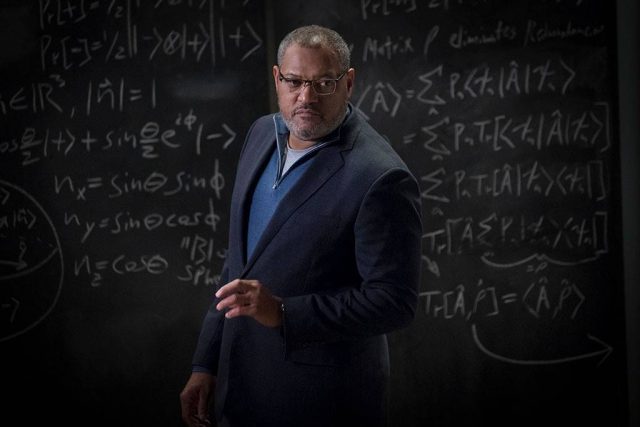
Even the IMAX 3D cut is surprisingly great, adding a bit of that lost scope back to the production to help increase the fun and excitement, even for a smaller-scale Marvel Studios movie. You don’t get much of a sound upgrade in an IMAX theatre, but the enhancements to the screen and 3D effects definitely make this premium format worth springing for if you have the means! You’re still getting a very enjoyable, amusing visual showcase if you just stick to a flat 2D showing of Ant-Man and the Wasp, but you do lose some of the manic fun behind the visuals that way. Ant-Man and the Wasp is best viewed on the big screen with at least a pair of 3D glasses, and preferably IMAX 3D glasses if that option is available to you. Even after the visual masterworks of Black Panther and Avengers: Infinity War, it’s amazing to see how Marvel Studios keeps sublimely raising the bar for their movies as prime special effects showcases, and even the smaller and goofier Ant-Man and the Wasp certainly doesn’t buck this trend!
Ant-Man and the Wasp may not impress quite as much as Black Panther or Avengers: Infinity War, but it’s really not trying to. In letting loose and continuing to find new and interesting ways to go for broke with its ridiculous lead hero and debuting heroine, Ant-Man and the Wasp feels perfectly placed at the tail end of a year that’s otherwise been very heavy and emotionally overwhelming for the MCU. After being put through the emotional wringer, Marvel fans especially could really use a palette cleanser to round off 2018’s Marvel Studios selection, and Ant-Man and the Wasp does that job beautifully, while also standing as a wonderfully-made action-comedy on its own merits.
Even better is that Ant-Man and the Wasp quite clearly outpaces its good, but noticeably more uneven 2015 predecessor, especially now that its story progression doesn’t feel stitched together on borrowed plot elements from the first Iron Man movie. On top of being more consistently funny and engaging to watch, Ant-Man and the Wasp also more confidently carves its own distinct place in the MCU, continuing to lay more promising groundwork for the further development of the Ant-Man movie franchise on its own, while also dropping just enough bread crumbs to keep fleshing out new corners of the MCU at large, namely with the proper establishment of Hope Van Dyne’s Wasp, as well as the Quantum Realm.
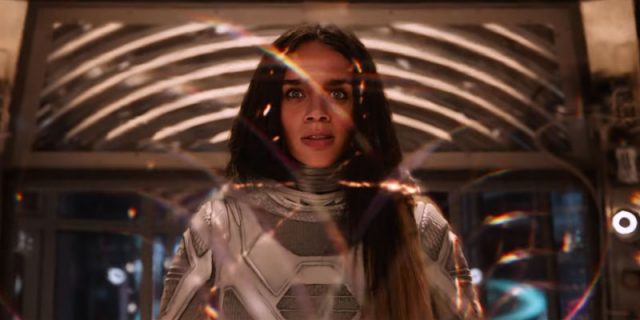
Ant-Man and the Wasp certainly doesn’t allay fears of drastic changes to come to the MCU’s roster in the wake of Avengers: Infinity War, but as a fun little side odyssey for a group of characters that didn’t get to participate in the fight against Thanos, it’s an effective distraction that prevents the shattered MCU from becoming too overbearing or depressing, as we keep trying to settle in to the agonizing wait for next year’s fourth Avengers movie. Perhaps Ant-Man and the Wasp is too silly and disposable to have any chance of standing with the many instant classic movies that the MCU has delivered so far, not to mention the two that it’s delivered this year already! As a movie that’s not trying to be anything other than silly though, it’s one of the best slices of silly that this Summer, and perhaps this year at large, will no doubt offer!

